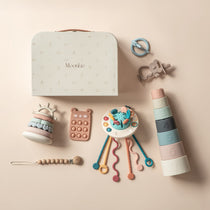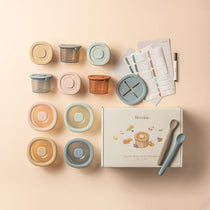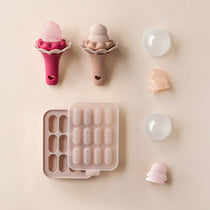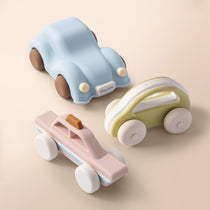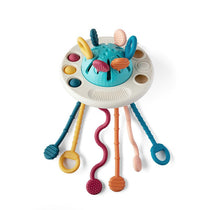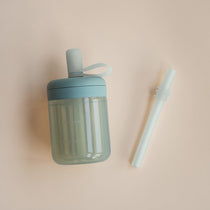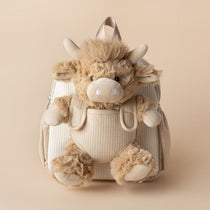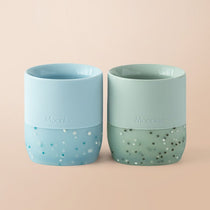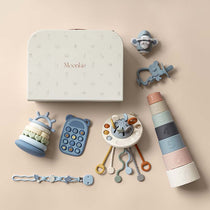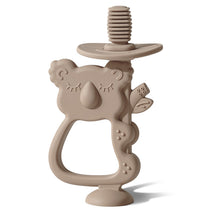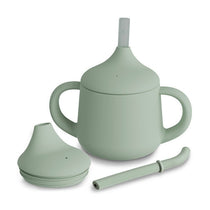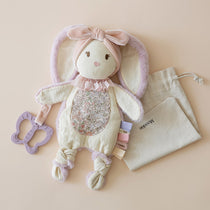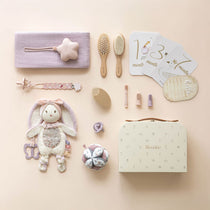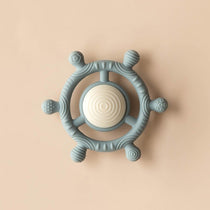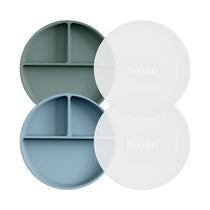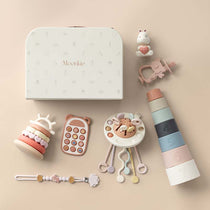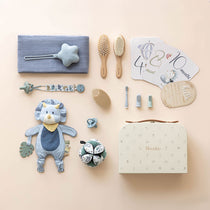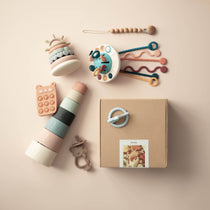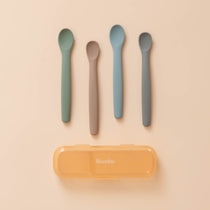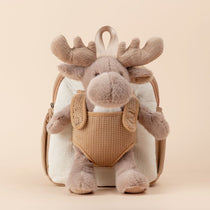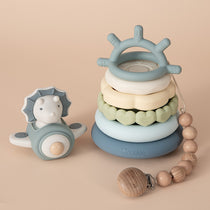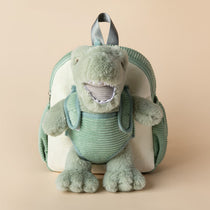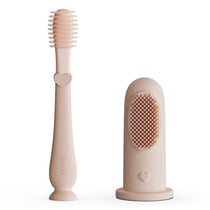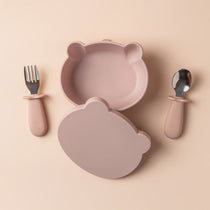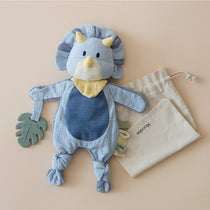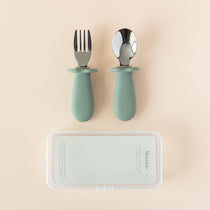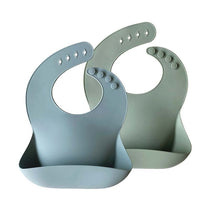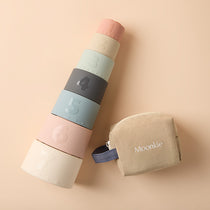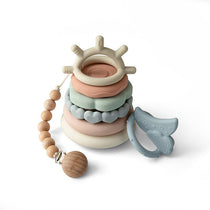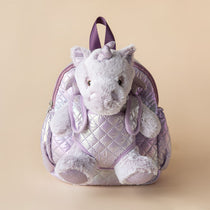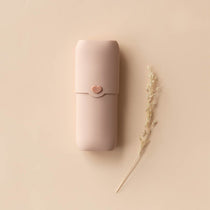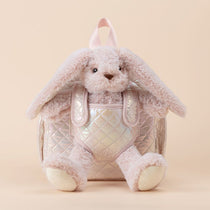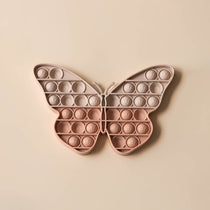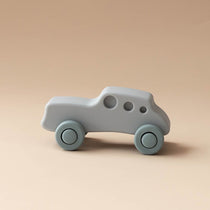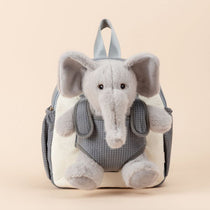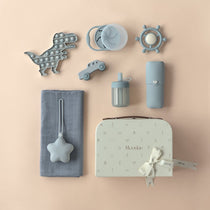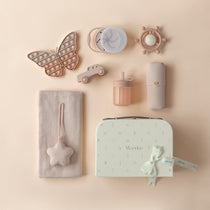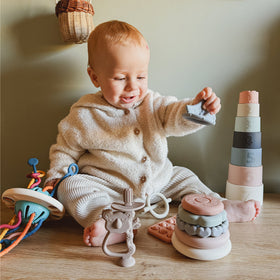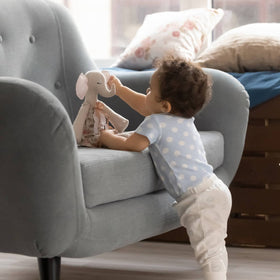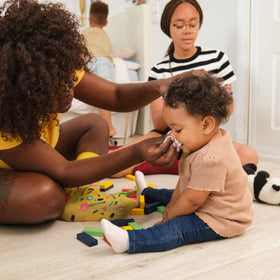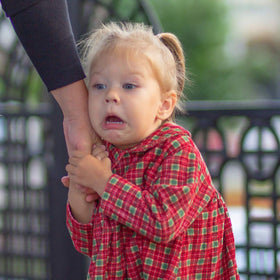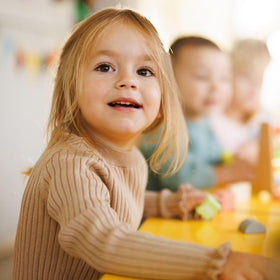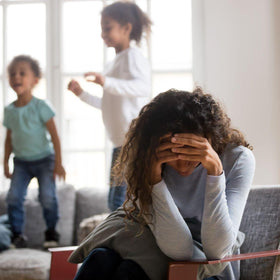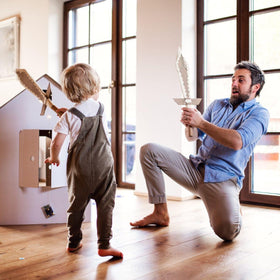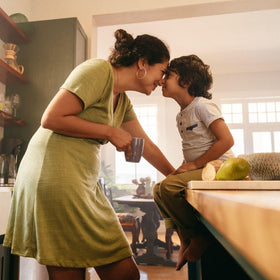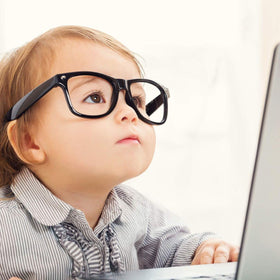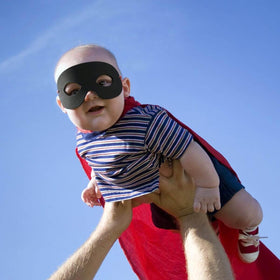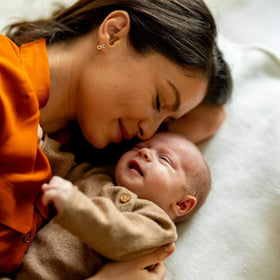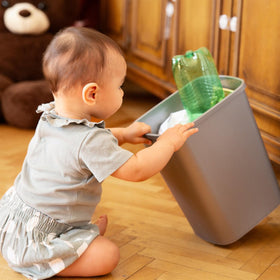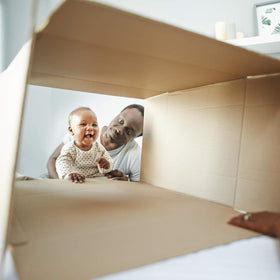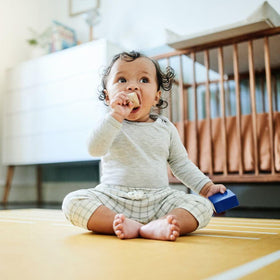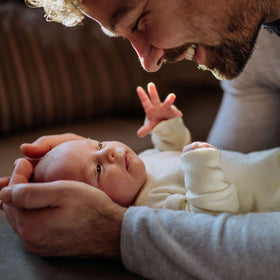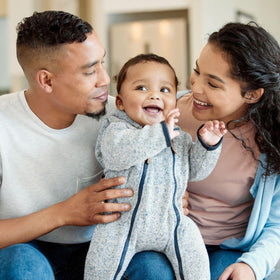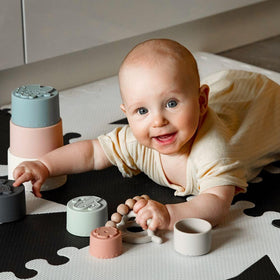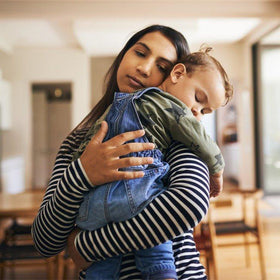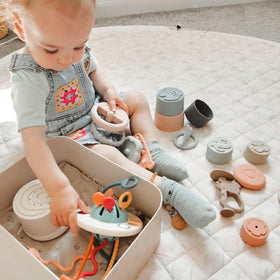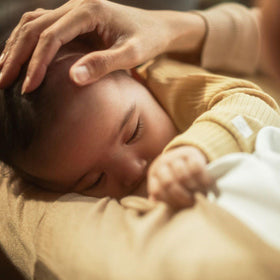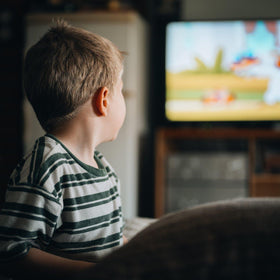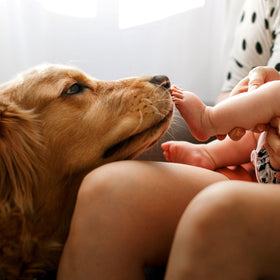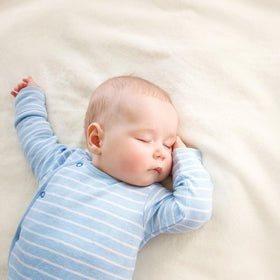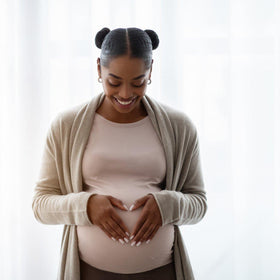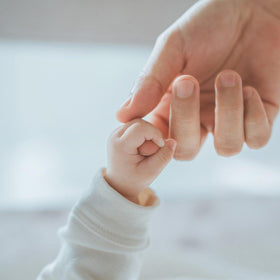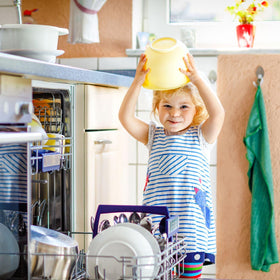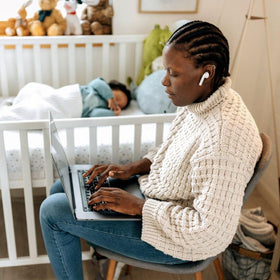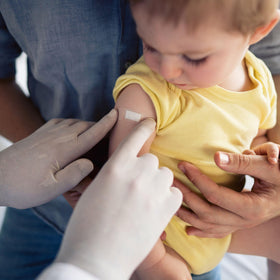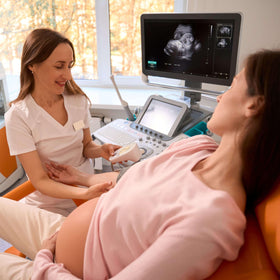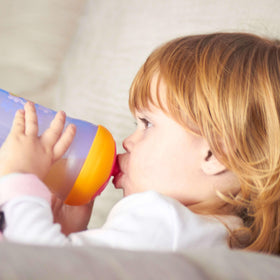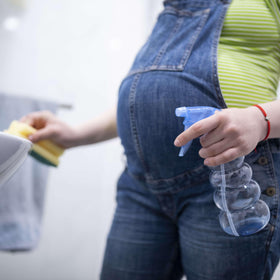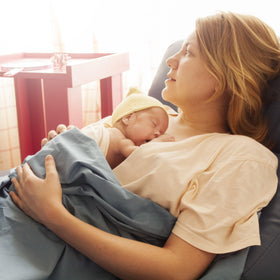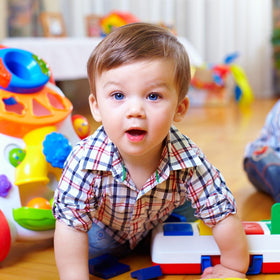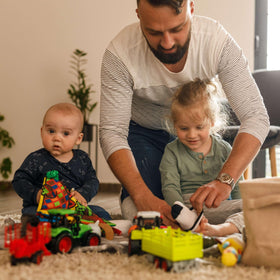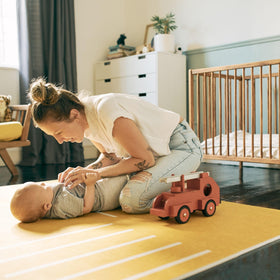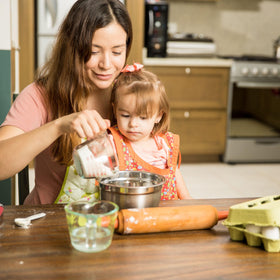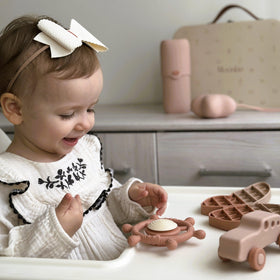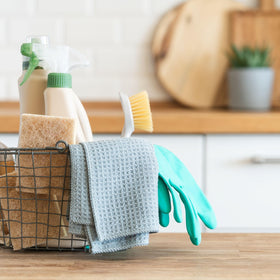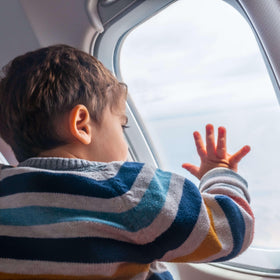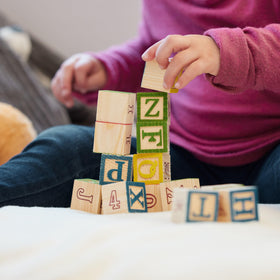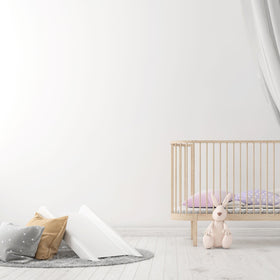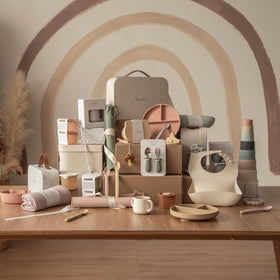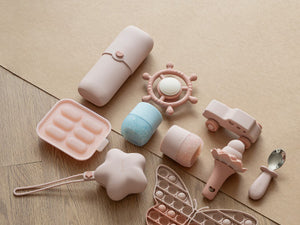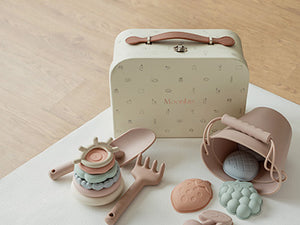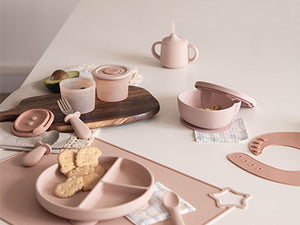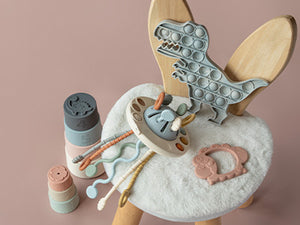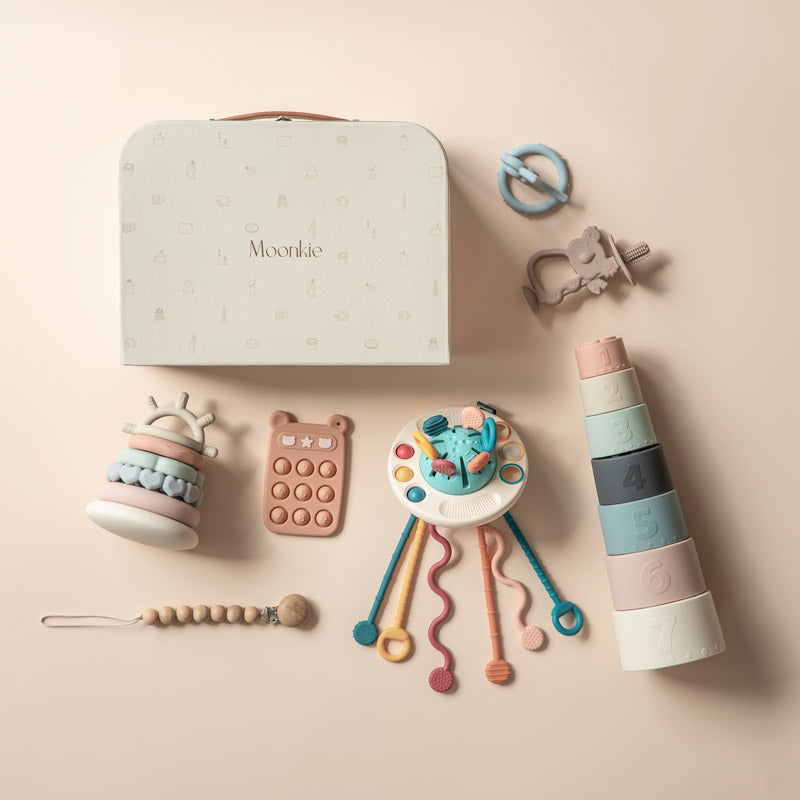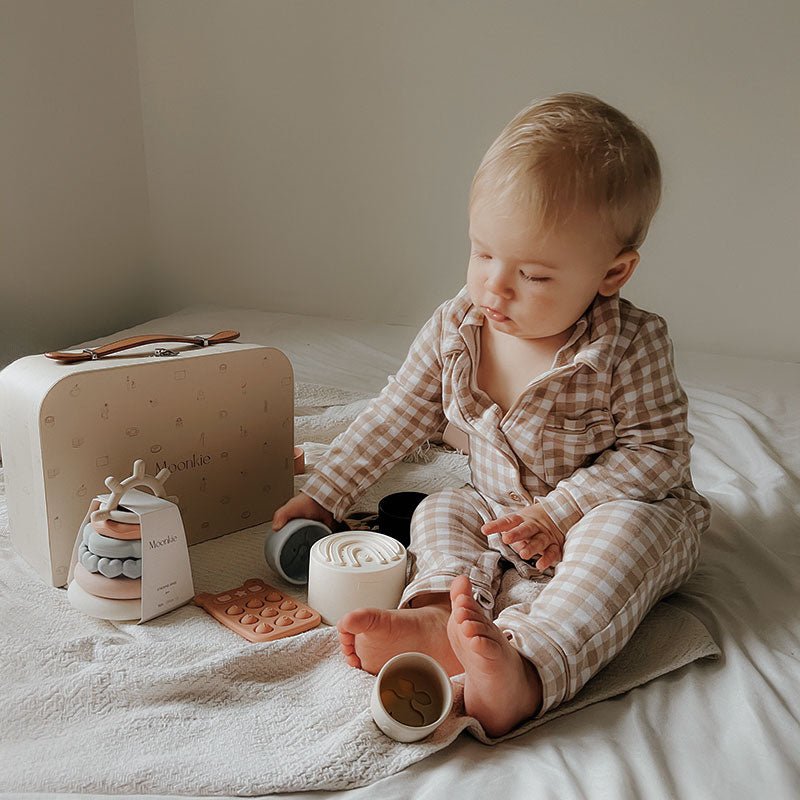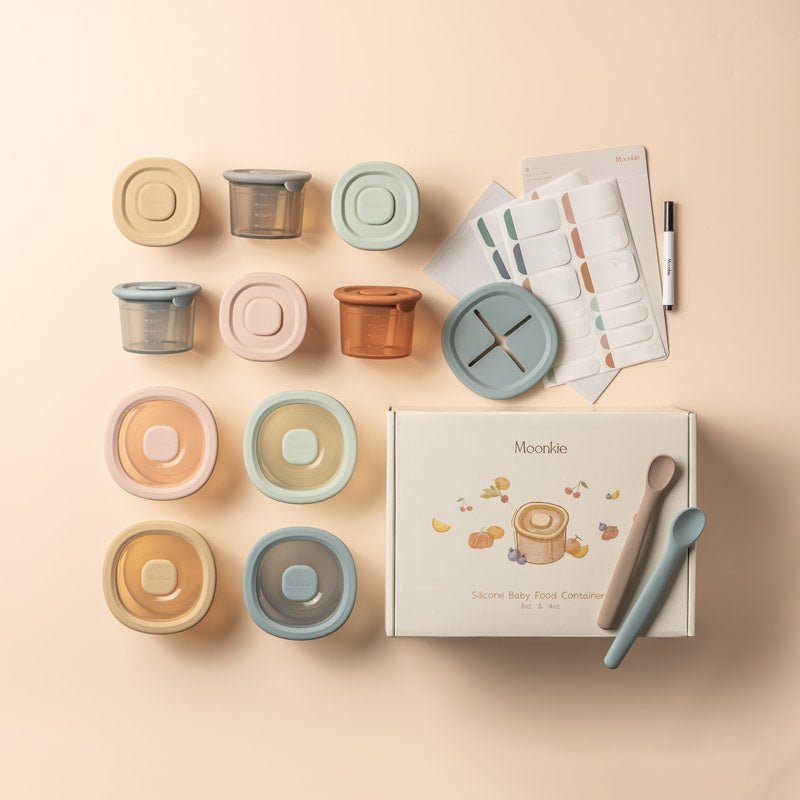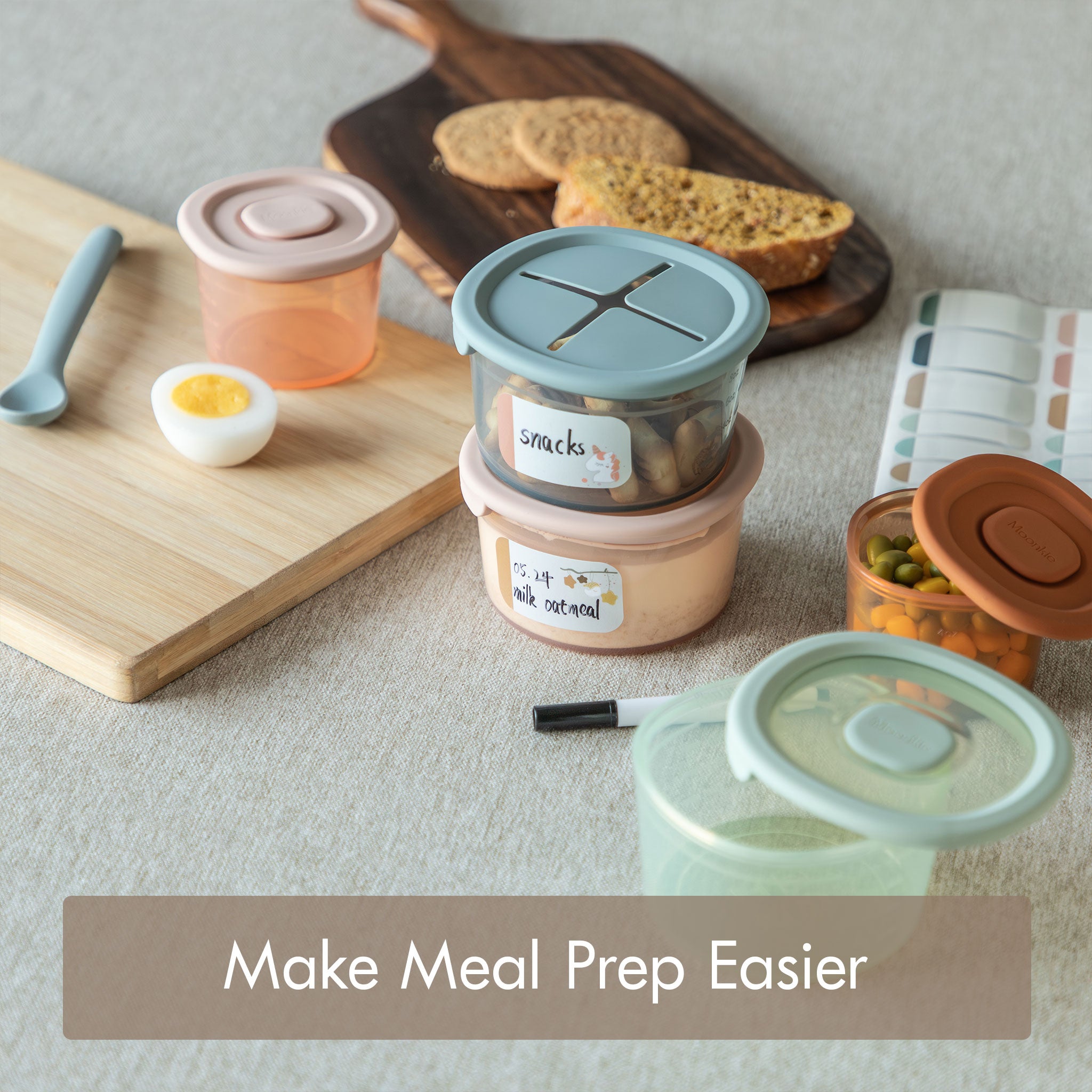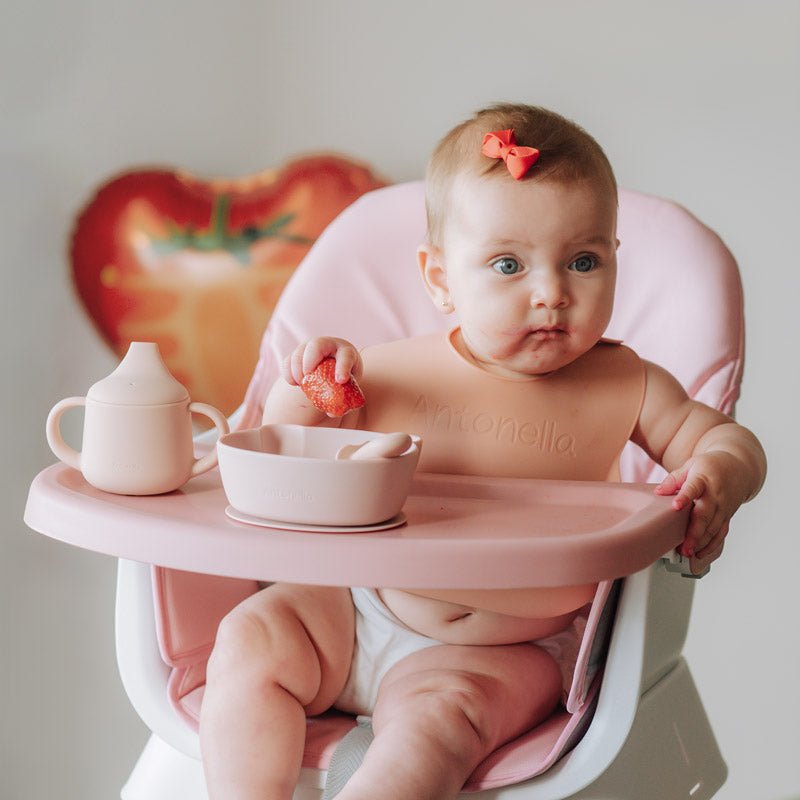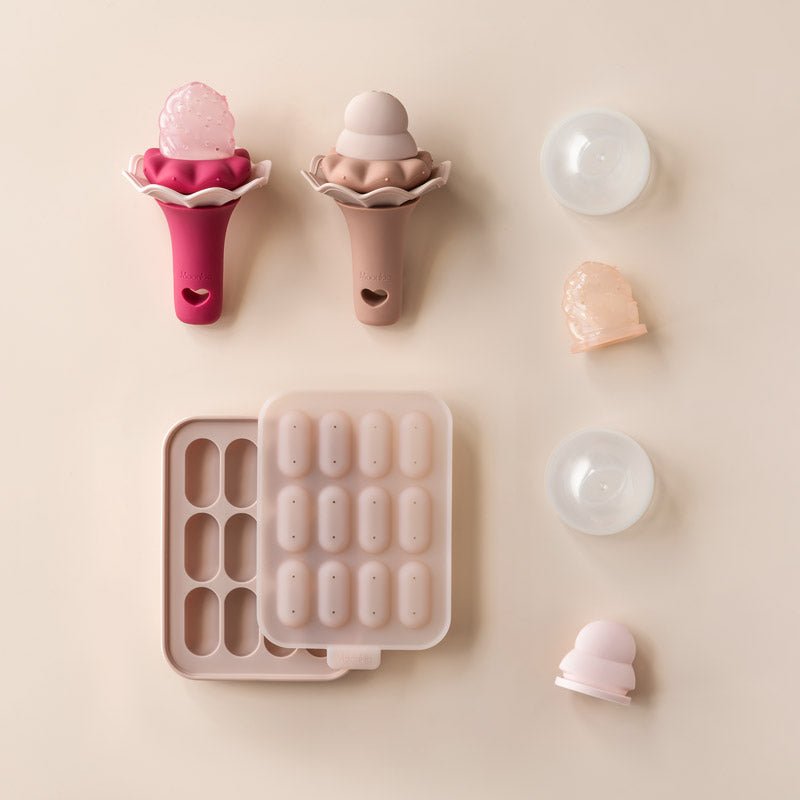
Traveling with babies and toddlers often means doing everything you usually have to do in a new place without all your tools. If your family prioritizes sustainable living, traveling may test your resolve.
Sustainable traveling with babies and toddlers is possible when you think ahead. However, "sustainable" is not a cut-and-dry definition. From packing snacks in reusable containers to arming yourself with eco-friendly toys, staying green on the go is a doable challenge with few compromises.
Since a myriad of articles exist on choosing eco-friendly accommodations and transportation, this article will avoid those topics. Instead, it will focus on actionable steps you can take to avoid compromising sustainability on a trip.
9 Sustainable Travel Tips with Babies and Toddlers
Usually, "sustainability" has something to do with environmental friendliness. But sometimes, "sustainable" means employing tactics for keeping cool and collected when you miss your exit and little ones are having a meltdown every few hours.
Here are nine tips for traveling "sustainably" with babies and toddlers that have helped me survive dozens of flights, road trips, and weekend excursions.
1. Let Your Kids Pack Their Own Activity Bag
If you happen to have a toddler who likes to assert her independence, let her pack her own travel activity backpack. This may give you a chance to pack her clothes bag without much interruption but could also make her more excited about long hours of sitting and waiting.
Speaking from experience, your toddler or young kid will probably not pack "enough" travel-friendly toys, so prepare a small bag of backups and activities to do at your destination.
Some of my road trip, eco-friendly favorites have been:
recycled paper and beeswax crayons
wooden cars on a tray that rests on both sides of the car seat
stuffed animals made from renewable resources
little wooden ball mazes
small travel books
hand-held sand balls or hackysacks
a baby mirror
a hanging car seat rattle
2. Plan Flexibility Into Your Trip
You would think that we would heed this tip because we see it so often, but parents often put a lot of stress on themselves and their kids by not building extra time into their travel plans.
Whether it's a one-hour layover at an airport or only allowing a thirty-minute lunch break, the "time saved" by rushing around is probably not worth the stress and anxiety. An accident, traffic, or flight delays could put a halt on transit for a while.
Besides, the odds of not having a diaper blowout, vomit comet, or spectacular meltdown while traveling with babies and toddlers are next to nil, so you might as well add some margin to your plans.
Personally, I've learned to never take a layover less than two hours and to plan for one thirty-minute stop every two hours on the road. It's my way to avoid becoming disgruntled. And hey, if everything is sailing smoothly, I will be happy and content with our progress!
3. Pack Plenty of Healthy Snacks
As a kid, you may remember stocking up on your favorite road-trip candy and snacks before embarking on a trip. Or maybe your family stocked a large cooler with sodas, sandwich meat, and candy bars. Either way, the odds are that you tend to eat more junk food when traveling due to convenience or nostalgia.
Yet most of that food causes an upset stomach, constipation, endless snacking, or low metabolism. Your little ones probably feel those same symptoms, which could increase whininess or keep them from sleeping normally.
Of course, traveling or being in a new place can contribute to these symptoms, too, but junk food certainly doesn't help. The alternative? Pack healthy snacks! These don't have to be bland, tasteless, or expensive. Just think ahead and prepare snacks your little ones already like.
Here are a few of our "mostly healthy" road-trip favorites:
prepared fruit packs of grapes, cut apple and orange chunks, and lemon juice
hummus and baby carrots and crackers
peanut butter and crackers
homemade granola bars
raisins and pecans
gorp (homemade trail mix)
bananas
cucumbers and cherry tomatoes
small bottled homemade smoothies
cheese, crackers, and grapes
homemade muffins or cookies
turkey sticks
Store these snacks in durable, food-grade silicone containers to avoid chemical leaching or cracking. Moonkie's silicone feeding set also comes with plates and fitted lids that you can use as a little snack tray. Nifty!
4. Bring Comfort Items
If your little one has a stuffed animal or blanket he clings to, bring it! Changes in place, food, time, and routine can be challenging for little ones, so bringing his favorite comfort item may help him calm down when he feels overly tired or overwhelmed.
If you forget or lose a comfort item while traveling, try to spend time doing something you do together at home. You can also try letting him choose a new toy on your trip.
5. Use Eco-friendly Disposable Diapers
We live in a day and age where biodegradable disposable diapers made from plant-based materials exist. If you are an eco-conscious parent of a little one in reusable cloth diapers, biodegradable disposable diapers may be worth buying for traveling.
Plant-based disposable diapers are not cheap, but avoiding rinsing out reusable diapers in someone else's bathroom may be worth the cost!
Pay attention to your little one's skin, though. She could break out in a rash if she is used to cloth diapers or has skin sensitivities.
If you want more ideas for eco-friendly baby product essentials, read our guide: The Ultimate Guide to Reusable Essential Baby Products.
6. Stick to a Routine
As impossible as it may seem, maintaining some semblance of your wake-up and bedtime routine while traveling helps keep babies and toddlers comfortable. It's okay if you are in a different place with an adjusted schedule; just try to have a pattern similar to home.
For example, you could bring a book you always read at bedtime, follow the same hygiene routine, and do the usual evening activities.
Following these familiar routines will send the same signals your little one usually gets and leave less room for testing the boundaries. Don't be surprised if your toddler attempts to act out of line or throw extra tantrums. Just stay cool and continue upholding the same rules and discipline you do at home.
7. Take Breaks
If at all possible, take breaks to rest and recharge! Even a ten-minute walk or a twenty-minute nap helps. Staying calm while your littles act out in unusual travel schedules will take a lot, so give yourself some space to recharge.
This could be sitting outside the hotel room door while your kids fall asleep, asking a friend or family member nearby to take them for a bit, or letting your kids watch a few minutes of a kid show while you rest your eyes.
8. Keep Reinforcing Rules for Respecting Yourself and Others
Discipline on the go is hard to maintain because your little ones exhibit extra rule-breaking behavior when their environment changes. Kids, even wee ones who are not talking yet, are constantly testing the boundaries you've set in place for their health, safety, and well-being. It's how they learn!
So, if you let your kids break a lot of normal rules on vacation, they will understandably be confused when you reel them in again at home.

I'm not saying every house rule must be obeyed on vacation; I'm saying the "this-is-how-to-be-a-decent-human-being" rules should be upheld no matter where you go for your sanity and their development.
9. Give Your Kids Simple Choices
Choices are a privilege, but they can be overwhelming. Though your baby may not care much about making choices, your toddler likely will. Allowing your toddler to make a simple choice while traveling can help him build confidence and exercise decision-making skills.
It is easy to overdo it, though. One "big" decision and a couple of more minor decisions are a solid start for young toddlers or more timid personalities. For more outgoing personalities, making decisions that affect everyone can cause a somewhat humorous and mildly annoying "drunk-on-power" response.
As a parent, you know your child best. Giving him a role in the craziness of travel is a fun way to encourage him while also making this traveling thing a tangible adventure.
What Does "Sustainable" Really Mean?
"Sustainable" sounds like an impossible quality, especially if you listen to all the hubbub about "how to be sustainable" broadcast in every conceivable media outlet. However, as with all labels, you need to dig deeper to understand what a baby product company means when they say "sustainable."
You can boil the "sustainable" label down to one of five definitions:
something biodegradable
something recyclable
something that is especially sturdy and enduring
something made in an eco-friendly process
something made of plentiful renewable materials (natural rubber, cotton, wood, etc.)
What a spectrum of meanings! But that's because you can't find anything "totally sustainable" that isn't born or grown naturally. As such, "sustainable baby products" always have a cost.
Buying "Sustainable" Baby Goods
If you want to make eco-friendly baby product purchases, your best bet is items made from plentiful renewable materials because they are likely biodegradable, too.
The only caveats are how those resources are harvested, how far they travel, and how they are processed. Unfortunately, many baby toys and products made from renewable materials need to be replaced relatively quickly.
So, if their materials are not harvested sustainably or are shipped around the globe, then replacing such items becomes less "sustainable" than buying a baby product that would have lasted through several children.
Herein lies the never-ending balancing act of trying to live sustainably: knowing the cost and choosing the lesser of evils while staying within budget. Take a look at the following table for examples.
"Sustainable" Baby Product |
Common Environmental Problems |
wooden toys available at big retailers |
|
natural rubber pacifiers |
|
organic cotton clothes and blankets |
|
reusable baby bottles and food containers |
|
reusable cloth diapers |
|
So what can busy parents do? Parents have simply got to do their best with the options available to them in their respective regions and budgets.
While traveling, that means taking what you've got with you and resisting the urge to buy cheap, disposable products to get by.
Why Does Moonkie Use Silicone to Make Sustainable Baby Products?
Longevity and safety. Our purpose in choosing high-quality food-grade silicone in our baby products and toys is to create something that will serve your family foryears. And, if you are blessed with grandkids one day, our silicone baby toys may entertain them, too.

Though silicone comes from silica (sand), which is an unfathomably abundant resource, the process of combining silica with carbon is an incredibly hot chemical process that isn't top-notch for environmental friendliness. Moreover, silicone isn't biodegradable.
But silicone is an infamously stable material that withstands boiling, steaming, microwaving, freezing, baby teething, toddler tantrums, and jealous dogs (source). When designed for several stages of babyhood and toddlerhood, silicone baby products are fabulous for surviving the chaos without being replaced.
A silicone baby product cleverly designed for babyhood, toddlerhood, and beyond is even better! For example, our baby food storage containers are helpful for as long as you are willing to use them. Use them for holding snacks on the go or for chopped toppings in the fridge.
If a family member somehow manages to destroy a Moonkie silicone item, you can recycle it in a special facility that will break it up and turn it into heavy-duty mats, playground padding, or running tracks. You know, the outdoor mats that you don't want breaking down anytime soon.
However, a lot of discarded silicone products don't actually make it to these facilities. Research is being done to find better ways to recycle silicone (source).
We've delved into silicone sustainability in this article: Pros and Cons of Silicone Baby Toys: A Comprehensive Guide for Parents. Check it out to learn all the things!
In a Nutshell
Sustainable traveling is possible with babies and toddlers! You just have to be creative, plan ahead, and set firm boundaries. Staying green on the go starts with the product choices you make at home and how you pack. Once you get going, factor in plenty of flex time, involve your little ones, and enjoy it!

